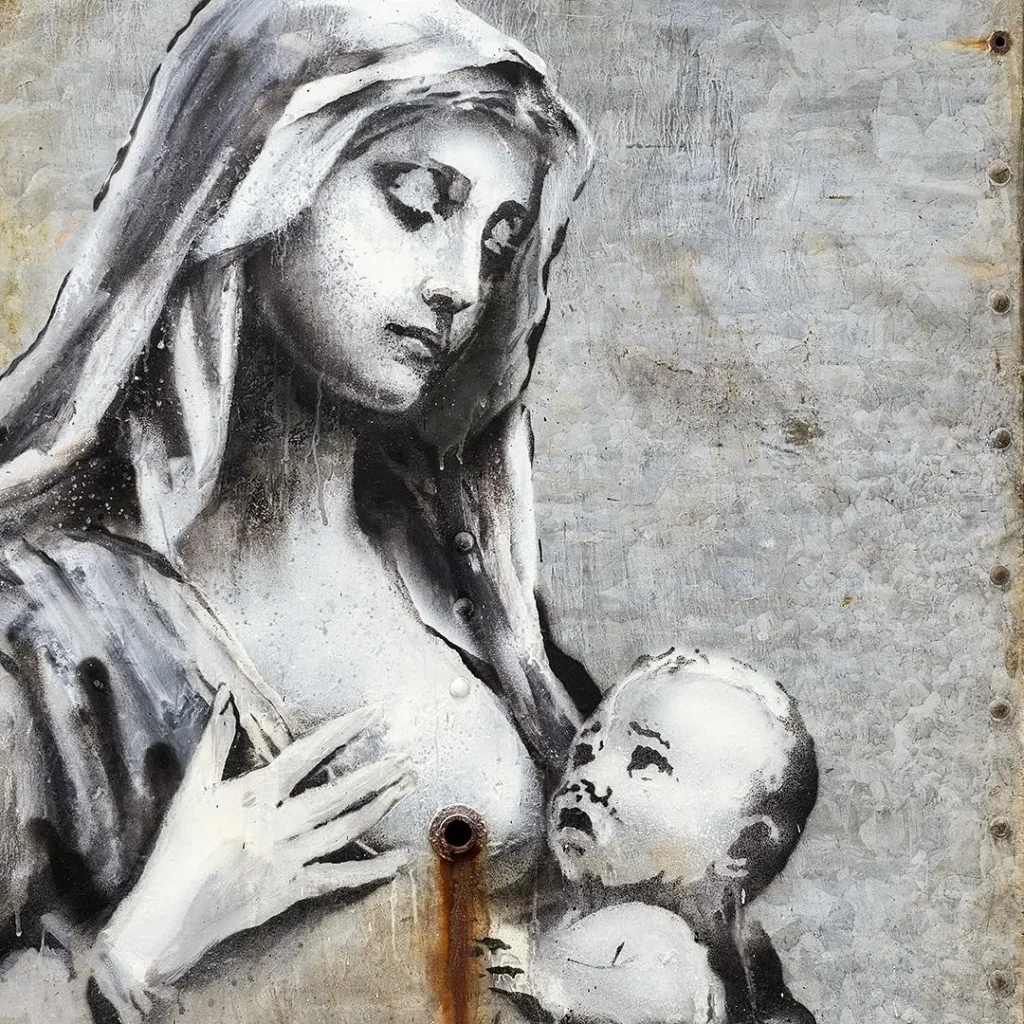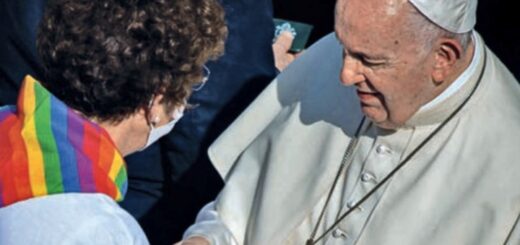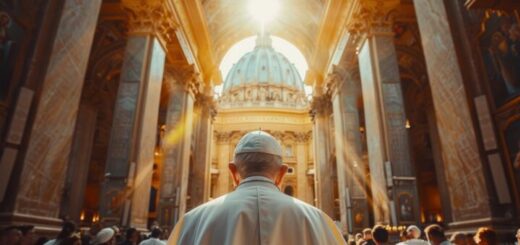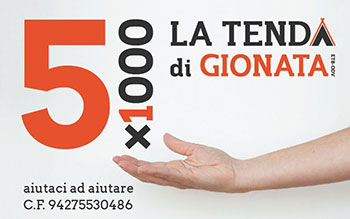Banksy's Madonna and Child. A real icon against the expectations of tradition

Reflection by Lorenzo Russo
Banksy speaks again and, as usual, he does it with a graffiti. Published on The street artist's Instagram page known for its anonymity, this Madonna with Child fits into the path of an ancient iconography: that of the virgin Mary who, cloaked, uncovers her chest with a delicate and supple gesture so that the recently born Son can be nourished from her breast.
Story of an icon
Present in the pantheons of various cultures, from prehistory onwards, it is believed that this ultimately Christian depiction was originally borrowed, in an ancient oriental environment, from the Egyptian representations of the goddess Isis breastfeeding her son Horus. Attested, in fact, in 6th century Coptic and Byzantine art with the epithet of Panaghia Galaktotrophousa, or the “all holy who gives milk”, this symbol then spread to the West, especially at the beginning of the fourteenth century, where it is known by the Latin epithet of Virgo lactans, virgin who breastfeeds.
In the process of tradition from the East, this icon, like others, became less Byzantine, therefore less hieratic, and more human. Numerously traceable between the 14th and 15th centuries, its production then suffered an abrupt halt in official art due to the Counter-Reformation, which, not allowing nudity in religious depictions, also over-painted the breasts exposed in the paintings. The first new declinations of virgo lactans we will find them again in the modern age, when the sacredness of Marian symbolism begins to intersect with the ordinariness and profanity of any female subjects.
Theological symbol
Over the centuries theology has found in milk a theological place. In the first letter of Peter, milk is defined as spiritual nourishment:
"Therefore, putting aside all malice and all fraud and hypocrisy, jealousy and all slander, like newborn children, long for pure spiritual milk, to grow with it towards salvation: if you have truly already tasted how good the Lord is.” (First letter of Peter 2,1-3)
Later, Clement of Alexandria (150-215) will write about the milk-Logos:
"O mysterious wonder! One is the Father of all, one is also the Word of all, even the Holy Spirit is one and the same everywhere; a single virgin becomes a mother, and I like to call her Church. Only this mother had no milk, since she alone did not become a woman, but she is both a virgin and a mother, intact as a virgin, full of love as a mother and calling her children to herself she nourishes them with a holy milk, the Logos, which is suitable for children” (Clement of Alexandria: Paed. I 42.1)
Such was the importance of the Christmas breastfeeding scene that, in the 6th century, a devotional legend began to be established according to which, in a cave in Bethlehem, Mary accidentally spilled drops of her milk on the ground in her haste to breastfeed Jesus while the Herod's soldiers pressed on. Later, the crusaders who returned to Europe from the Holy Land spread this story, bringing with them, as relics, vials containing the sacred milk.
Maria: model for all, friend of none
As feminist studies point out, the results of the secular doctrinal theorization on the uniqueness of Mary are before our eyes: women, exalted for a mystique of mysterious femininity which must be enough for them not to expect anything else, are on the one hand theoretically sacralized as a womb of God and Life; on the other, deprived of any practical recognition in the hierarchical cultic organisation.
The Mother of God, completely holy in her perfect unattainability, raised as a suffocating model to be emulated because she is pious in submissiveness, worthy in virginity, learned in silence, is thus imposed as an icon of style for those who seek in faith an example which, forbidden to be found in Christ can only be traced to the Madonna deprived of death.
Clement of Alexandria, in the piece of Pedagogue reported above, traces precisely the directives of the Marian identikit that has come down to us: Mary/Church/eternal child who never became a woman because she was unaware of sex with a male, she is the mother of all in the spirituality of her milk-Logos.
Back to the Gospels
Fortunately the evangelical texts say otherwise. In the gospel according to Luke, after Jesus had performed one of his exorcisms and defended himself from the accusations of working through the Devil, a woman raised her voice from the crowd and said:
“Blessed is the womb that bore you and the breasts that nursed you!” (Lk 11,27)
This beatitude, sometimes decontextualized to sanctify the theological place of breastfeeding, would seem a beautiful opportunity to celebrate Mary's motherhood. Except that, according to the text, Jesus responds in counterattack:
"Blessed rather are those who hear the word of God and keep it” (Lk 11,28)
As? Doesn't Jesus care about his mother's womb, doesn't he sanctify the breast that nursed him? I don't think that's the case. Rather, what it seems to me to do is shift the axis of interest from the exaltation of woman as container to woman as content. Where the content is the wisdom of those who listen to the liberating word of God.
At this point, if the Bible is truly an instrument of revolution in every place and in every time, I believe that this response of Christ, today, can contribute to defuse that rhetoric which makes the Woman the Womb of the Mystery of Life, a stereotype manipulated to create a model, demonize deviant alternatives: ultimately to cage women.
Is it strange that a woman says Luke 11.27 and is corrected by Jesus? No. Because patriarchy can be in the words of all people, without distinction.
That the text of Luke 11 continues with a tirade of controversy by Jesus towards the Pharisees and the doctors of the Law is the most satisfying thing we could ask for:
"You Pharisees purify the outside of the cup and the plate, but your inside is full of robbery and iniquity. Fools! Didn't he who made the outside also make the inside? Rather, give alms of what is within, and behold, everything will be clean for you. But woe to you, Pharisees, who pay the tithe of mint, rue and every herb, and then transgress justice and the love of God. These things needed to be taken care of without neglecting the others. Woe to you, Pharisees, who cherish first places in the synagogues and greetings in the squares. Woe to you because you are like those tombs that cannot be seen and people pass over them without knowing it” (Lk 11,39-44)
It's still:
"Woe also to you, doctors of the law, who burden men with unbearable burdens, and you do not even touch those burdens with a finger! […] Woe to you, doctors of the law, who have taken away the key to science. You did not enter, and you prevented those who wanted to enter” (Lk 11, 46-52)
Christ leaves no room for the rhetoric of the feminine Mystery and immediately afterwards condemns those who make their bread of life out of uncritical and bigoted faith. Woe to you. You did not enter, and you prevented those who wanted to enter. Thank you Jesus.
Banksy: not an explanation, but an inspiration
Ultimately, what Banksy means through his new stencil mural has not yet been officially clarified, perhaps it never will be. Some articles online speak of a denunciation of the contemporary hypocrisy that sanctifies Christmas despite the ongoing wars. Can be. A symbol is a symbol and as such it etymologically brings together the personal psycho-emotional resonances of those who observe it.
For my part, this work leads me back to a principle of reality. Inserted in the wake of the iconographic tradition, this work disrupts it through different elements. A pipe embedded in the wall (probably there for some time, judging by the flow of rust that comes out of it) pierces one of the Virgin's breasts. This element has been interpreted as a bullet hole shot to wound the Madonna. To me, from the first moment I saw the work, that round seemed like Mary's breast itself.
With a determined face, this Madonna offers her son the humble but real resources she possesses: bitter rust instead of milky white. The pristine whiteness of Mary's milky virginity is replaced here by the flavor of maternal rust, ferrous like the blood that makes us human. The child's gaze, which seems to predict "Father, if you want, take this cup away from me!” (Lk 22,42), is devoid of any reassurance typical of virgo lactans Mariana. Caught in the eternal instant of the mural's fixity, Jesus will soon learn that to survive he will have to drink that rust.
In this way, the fiction of the Nativity sweetened by infantilizing religion gives way to an adult iconography that makes the evangelical message a matter of reality.






